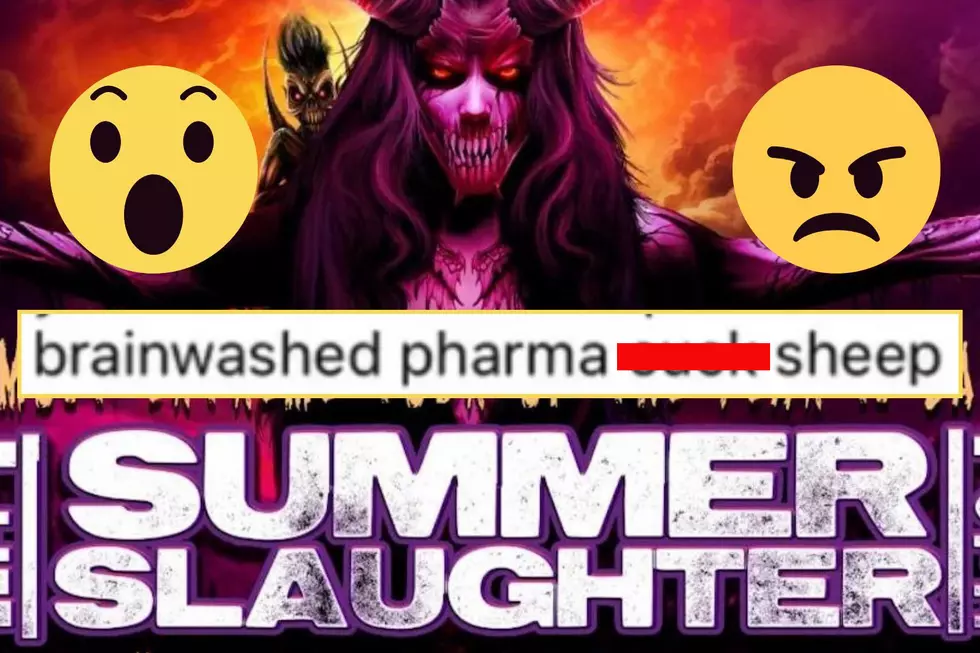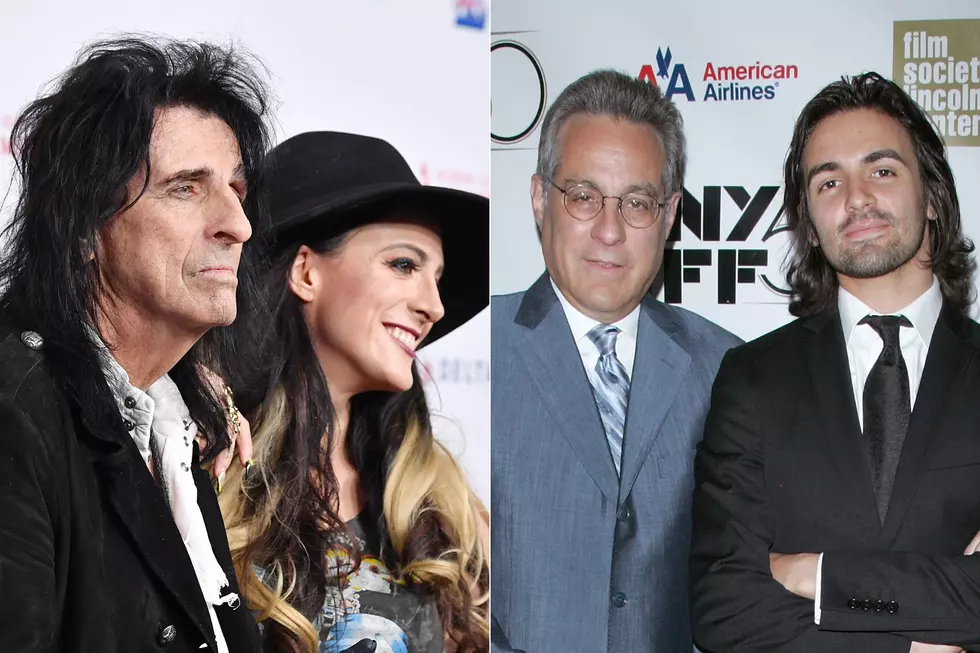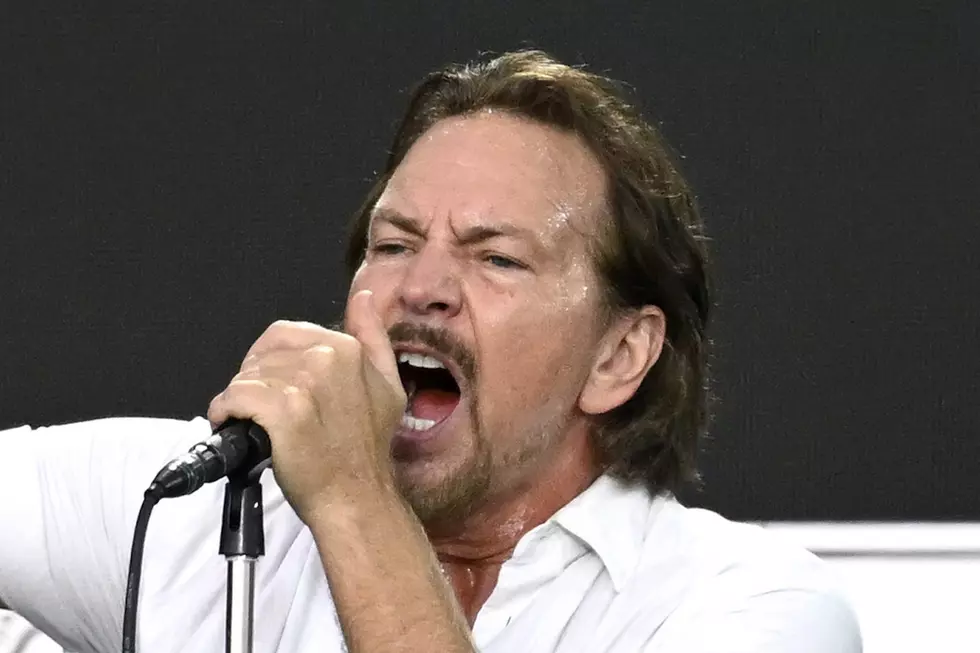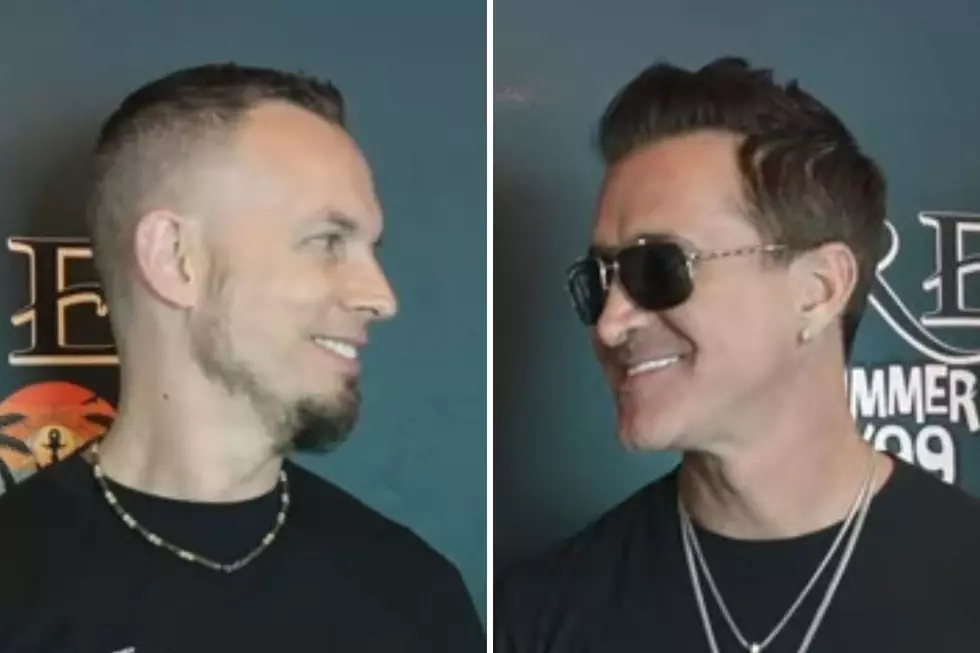
‘Death Metal Angola’ Documentarian Jeremy Xido on Angola’s Musical ‘Mini-Revolution’
'Death Metal Angola' is a powerful new documentary which explores the impact of extreme metal on young people in war-torn Africa, as well as the actual bands that perform the music. The award-winning documentary has been making the festival circuit worldwide, gaining much praise for the film's heart and passionate characters.
After 'Death Metal Angola' documentarian Jeremy Xido stopped by our offices to screen the film for us and some lucky contest winners, he sat down with us to help introduce 'Death Metal Angola' to the public, dig deep into the film's many protagonists and to find out more about Angolan music.
Tell us more about the main characters Sonya and Wilker.
Sonia Ferreira is a woman who currently is the director of the Okutiuka center for kids, an orphanage. She was a schoolteacher, that was her first career. She comes from a line of teachers. She's happened to have lived a life that is completely defined, in some ways, by war; war that had broken into the rest of her life that she herself had been a war refugee running from devastation and interrupted at every turn by new fighting in Angola.
She's a person whose response to that has been to look to the most vulnerable members of society to try and help them. In that case, it's children. She also happens to be one of the biggest proponents of rock and roll in the whole country of Angola. It's this weird thing; she has an encyclopedic knowledge of all the bands, when they started, when she saw them. I think part of her strength actually derives from her association with this music. It's kind of differentiated herself from everything else.
Wilker Flores is her boyfriend and Wilker is a death metal musician. He's a musician who particularly loves death metal. He'll play anything, but death metal is what makes him happiest. He's a computer programmer, he's young and energetic and his great dream is to see a proliferation of Angolan hardcore and metal bands that take over the whole world. He just wants to see it happen and to live within it and to experience it.
What kind of music are the people of Angola normally exposed to?
The most popular form of music in Angola is currently for young generations. There's an electronic music that's called Kuduro, which means "hardass." It has sort of like jungle / house. It uses Angolan rhythms, traditional rhythms, but it's also programmed. Some people say that it was initially programmed on cell phones. The rhythms were programmed on cellphones, so it has a really tinny, s--tty sound. This rough sound, or maybe it'll be sent through speakers that are old. It has a dirty sound, and it has rap over the top of it. The rap is actually quite aggressive and the music is quite aggressive, so it's not like hip-hop here. It's faster and much more fractured and I always think of it as having an energy that's more similar to punk. Where as hip-hop has this sort-of down beat, Kudoro is this thing that's staccato here and then there's this jumping aspect.
There's a dance. The dance, they say, came from a group of guys who were watching a video of the Jean-Claude Van Damme movie 'Kickboxer.' They saw Jean-Claude dancing and they all got up and started making fun of him and dancing with his hard ass, his stiff ass cheeks. I don't if that's actually true, but that's the story. That's the 'hip' music. That's the music that people think they can have a career in, to have all the kids gravitate towards. There's other kinds of music, something called Semba. There's something called Kizomba, which is a Salsa kind of thing. Semba is more ballads and kind of a softer music. There are a lot of traditional kinds of music. Very few people listen to rock. Rock is not a typical kind of music people listen to, it's because of these guys that it's starting to grow.
When you began to find this underground, "mini-revolution," were you surprised by how many bands there actually were?
Totally. I was surprised there were any bands. Kuduro I knew about because I actually really like the music because it's ugly. It's a good electronic sound. So I was very aware of that, but when I met this guy and he told me he was a death metal musician I literally could not compute what he was saying to me. I thought, "Okay, he's an anomaly." Then all of a sudden he was like, "You have to look at this band and this band and this band and this band!" I was like, "Wait, how many bands do you have?" He said there were like 20 bands that were going to play. I was like, "Where are they all?" They were kind of spread out. Wilker started finding more and more bands; he was on the search for them. The bands run the gamut to more of an indie rock sound, to something that's more of a mix of softer traditional sounds with harder rock sounds, all the way to straight up death metal and metalcore.
They all get along really well. They all support one another, it's just rock for them. There is a very clear distinction between, "No, that's not what we play," but all the metalheads love the soft rock guys, they like that they play and visa versa -- "I don't play that, but I love what you're doing." It's a very interesting community.
I love how the film grounds you with what their life is like, but then you get caught up in the escapism of the music. You feel like you're really connected to these people, but then it slams you again and you're right back down to these horrible realities. Is that something you were trying to capture?
Yeah, definitely. There are couple of different places in Angola and they have very different feels. Huambo was really f---ed up by the war. It was hit really hard and life there is hard. Luanda has more of a bling energy to it, there's a lot of money there. There's a sense of, "Oh, we can be stars," there. But when people in Angola talk about the real Angola they talk about Huambo, that's where it hit hard and that's what people are experiencing. Luanda is this dreamland that they're trying to turn into Miami Beach without paying attention to the realities of what we've gone through and what even still exists.
One of the things I was interested in doing is there was something about where the music can take you and there’s this belief in the city. Then you go back again and again and again to, "Wait a second, this is the reality." This is what people have gone through, this is why this music makes sense. It's also why you want to take this energy and bring it to Huambo. You want to bring it from Luanda and from Benguela. There is this thing - it's also the last times I was in Angola. It's hard. It actually is consistently hard. They're incredibly vibrant and incredibly contemporary. It's not a typical cliché image of Africa. It's very much part of the 21st Century, but life - it reminded me of where I'm from, Detroit. It reminded me of a lot of my city. I actually thought there’s quite a close affinity between Huambo and Detroit in a very weird way.
In the film, when they start setting up for the festival and they become five hours behind schedule, what's the stress level like?
It's off the hook. The stress level for Yuri, [Founder of the Angolan Association of Rock] who's responsible for getting all of the tech stuff together, he's just out of it. The stress rises as the audience shows up. Being a little late, they expected. But being that late? No one expected it. Then the power went out and the board got burnt out because the guys who set up the electricity did it incorrectly. It was chaotic. The most amazing thing was the moment the show actually started, because at that point they weren't sure it was even going to happen. It was an unbelievable release. That first moment was like [gasp!]. It was great.
You mentioned that Children of Bodom have become involved in this documentary.
I was lucky enough to meet Henri 'Henkka T. Blacksmith' Seppälä from Children of Bodom and the rest of the band at Mayhem Festival in New Jersey. We got the documentary to them to watch. Henri watched it and he loved the film. He had just read a book called 'Fordlandia' about Henry Ford in the Amazon. So we talked about Detroit and Henry Ford and all this stuff. We really got along. What's really awesome is that there’s a guy in the movie, his name is Jayro Cardoso. Jayro wears a Children of Bodom t-shirt and they are one of his two favorite bands in the world. I asked, "Is there any way you would sign a t-shirt for him?" They're like, "Yeah!"
So I have, in my house still - I'll bring it to him by hand - the whole band signed his new Children of Bodom shirt. That's sort of where it began. Henry saw the film and really liked it. Then offered to post it to their 2.2 million (at the time) Facebook fans. Then after, he said he really wanted to do something else. We've put Henry directly in touch with Sonia from the movie. He's great. They're great.
Throughout the movie, there's always talk of their music being a "mini revolution." Do you hope that this film will be a part of that revolution?
Absolutely. I hope that everybody talks about Angola and Angolan rock. I hope that this movie could be part of helping put the idea that there's African metal, particularly Angolan metal, on the map, internationally. I'd love for these guys to be able to tour. I'd love for them to be able to get out of Angola, to have careers to where this is what they're doing. I would love for them to able to play in Angola. I'd love for the film to be a catalyst for that.
Jeremy Xido and the people at 'Death Metal Angola' have just announced their DMA Resilience Tour along with a Rockethub crowdfunding campaign. The goal is to raise $50,000 by Dec. 15 to fund screenings of 'Death Metal Angola,' town hall discussions and concerts in communities throughout the United States that have been greatly affected by economic hardship and natural disasters.
By helping fund the DMA Resilience Tour, you can receive production stills from the film, a signed 'Death Metal Angola' poster, a copy of the film's haunting score, signed Children of Bodom merch + much more. To donate towards 'Death Metal Angola,' click here.
'Death Metal Angola' will be a part of New York's DOC NYC film festival. The film will be shown Saturday, Nov. 16 at the IFC Theater with a start time of 9:45PM. Additionally, the Fulbright Program will be holding a panel discussion on Nov. 18 at the IFC Center. Jeremy Xido will be a part of the panel, which will begin at 2PM. Click here for tickets. 'Death Metal Angola' was produced by CABULA6 and Coalition Films.
'Death Metal Angola' Resilience Tour
More From Loudwire









